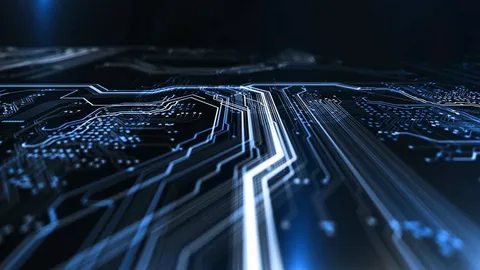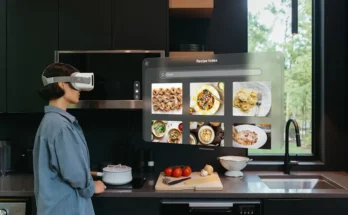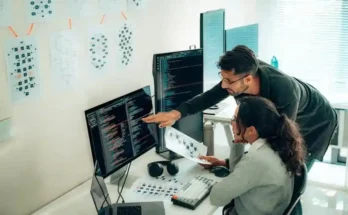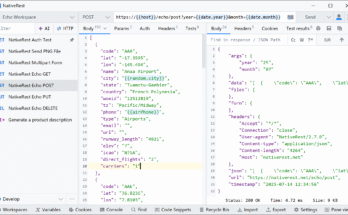Once upon a time, technology was simply a tool—a means to an end, whether that end was lighting a fire or sending a letter across continents. Fast forward to the 21st century, and tech has evolved into something more: a cultural phenomenon, a business empire, and for some, even a way of life.
From the smartphones in our hands to the algorithms shaping our decisions, technology is no longer on the sidelines of our lives. It is at the very core of how we experience the world. But tech is not just about innovation—it’s about transformation. And we’re all in the middle of it.
This explores how modern technology is quietly—and sometimes not so quietly—reshaping the human experience. It’s not just about what’s next, but about what’s now.
The Rise of Invisible Technology:
Have you noticed how tech is becoming almost… invisible? That’s not a glitch—it’s the goal. The more seamless a piece of technology becomes, the less we notice it. Take smart homes, for example. You don’t need to press a switch anymore. Your home knows when you’re cold and adjusts the thermostat. It senses your arrival and turns on the lights. This is ambient computing—where technology quietly serves you in the background without constant input.
Even wearables like smartwatches and fitness trackers blend into our daily lives. They track our heart rates, monitor our sleep, count our steps, and even nudge us to breathe—all while we go about our day. We aren’t interfacing with tech; we’re living with it.
-
Artificial Intelligence
If there’s one branch of technology that captures equal parts fascination and fear, it’s Artificial Intelligence. AI now powers everything from our search results to our smart assistants, from personalized ads to fraud detection in banks. It’s behind the music recommendations on your playlist and the chatbot answering your customer service query.
But here’s the interesting part—AI doesn’t just reflect data. It reflects us. The algorithms are trained on human behavior, preferences, and patterns. In many ways, AI becomes a mirror of who we are and how we think. This raises big questions about bias, ethics, and control. Who gets to teach the machine? And what values does it learn?
As AI continues to evolve, it becomes less of a tool and more of a collaborator—something that augments our intelligence, anticipates our needs, and challenges our decisions.
-
Healthcare and Tech
Imagine a world where a smartwatch detects early signs of a heart condition. Or an AI program spots a tumor in a scan more accurately than a radiologist. That world is already here.
Technology in healthcare isn’t about replacing doctors—it’s about equipping them. Telemedicine, wearable health devices, AI diagnostics, and robotic surgery are just the beginning. With tech, healthcare is becoming more personalized, more precise, and more preventative.
And it doesn’t stop at physical health. Mental health apps now offer meditation, mood tracking, and even AI-driven therapy bots. While no app can replace human empathy, they can certainly provide support, especially in areas where access to care is limited.
When done right, tech in healthcare becomes a powerful expression of compassion—connecting people to care when and where they need it most.
The Ethics of Innovation:
The faster technology moves, the slower our ethics seem to catch up. Facial recognition, deep fakes, surveillance tech, genetic editing—these aren’t sci-fi anymore. They’re now. And with great power comes… Well, you know the rest.
The real challenge isn’t building the tech. It’s building it responsibly. That means questioning how data is collected, who owns it, and how it’s used. It means designing with inclusion, accessibility, and privacy in mind.
Innovation without ethics is just a shiny liability. But innovation with empathy? That’s the future we need.
-
Tech at Work
The workplace isn’t immune to the tech takeover. Automation is streamlining repetitive tasks, AI is screening resumes, and remote work platforms are redefining what it means to be “at work.” While some worry that robots are coming for our jobs, the truth is more nuanced.
Yes, automation will replace some roles. But it will also create new ones. Roles that demand creativity, emotional intelligence, and critical thinking—skills no machine has truly mastered.
What we’re seeing is not just a shift in tools, but in purpose. Technology is giving us a chance to offload the routine and refocus on the meaningful. Less time spent on spreadsheets. More time spent on strategy. Less red tape. More problem-solving.
The future of work isn’t less human. It’s more deeply human—if we embrace it wisely.
-
Tech as Culture
Culture used to be shaped by traditions, rituals, and shared history. Today, it’s shaped by platforms. Memes, hashtags, viral videos—these are the new folklore. We live in a world where the next cultural moment can be sparked by a TikTok dance or a YouTube vlog.
Technology has turned us into both consumers and creators. We are no longer passive participants. We curate our identities, express our creativity, and engage in global conversations—all from a palm-sized device.
But with that power comes the responsibility to consume mindfully, to question what we’re being fed, and to think critically about the platforms we engage with. Tech is not just shaping culture—it’s shaping us.
Conclusion:
In the rush of innovation, it’s easy to lose sight of the most important component in the tech equation: the human being. Technology is not here to replace us—it’s here to enhance us. To extend our reach, amplify our potential, and deepen our connection to the world and to each other.
We are not passive recipients of the future. We are active architects of it. Every click, every line of code, every new idea carries with it a piece of our collective story.
So as we move forward, let’s not just ask, “What can technology do?” Let’s also ask, “What kind of world do we want it to create?”




